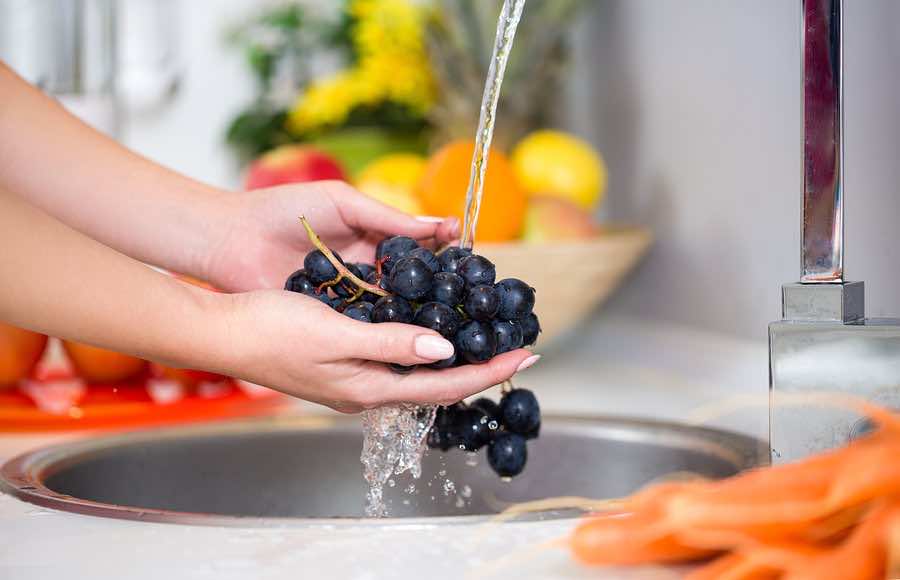
How To Buy Groceries – Understanding Produce Codes & The Best Way To Wash Vegetables


How To Buy Groceries – Understanding Produce Codes & The Best Way To Wash Vegetables
Hands down, one of the most important steps you can take to ensure optimal health and well-being is to eat your vegetables. Fruits and vegetables are loaded with vitamins, minerals, as well as antioxidants and will help put you in a position to see excellent health.
….If you choose correctly, that is.
The problem is that in today’s times, many of our seemingly healthy fresh produce is anything but. Crops are being sprayed with all kinds of pesticides, which are then transferred into our bodies, where they are left to wreak havoc on our cells.
Even worse, many foods are now GMO’s, which stands for a genetically modified organism, which means you aren’t putting anything natural in your body at all. Gone are the days when you could eat from Mother Nature. Now you are eating foods that have indirectly been cooked up in a science lab.
Curious what the effects of GMO’s will be on your body?
Check out the video below where I explain some of the details regarding this recent trend.
Now that you have some background information, let’s dive into the details on how to buy groceries, the various produce codes you need to know, and harmful effects of GMO’s that could be damaging your health, and the one secret trick to making any vegetable –healthier.
How To Shop For Groceries
If you want to eat healthier, grocery shopping is a big part of that process. Too many people fail to consume the diet they should be simply because they are not prepared.
(image of someone shopping for groceries)
They haven’t been to the grocery store and as such, don’t have the healthy ingredients on hand to create the dish that they want.
As such, they run out the local fast food drive-thru and there ends their healthy diet plan.
So getting to the grocery store is step one. If you want to eat healthy, you need to be purchasing fresh foods regularly.
Special Bonus: Download the 12 Week To Doubling Your Energy course for FREE and learn the top secrets to mastering food preparation and sticking with your diet plan.
Step two however is knowing how to purchase those foods wisely. And this is where many people fall short.
You may think that all the items you are putting in your cart are wise choices and will support a healthy body, but in actuality, it may be far from it.
There some general guidelines to know and remember that will help you learn how to buy groceries the healthy way.
These include:
- Shopping the perimeter of the store as often as possible (as this is where the healthiest items tend to be
found) - Always reading food labels if purchasing foods in the inner sections (checking for total calories per serving,
grams of sugar, fiber, and trans fats) - Never going to the grocery store hungry (which only increases the risk you put something unhealthy in your
cart!) - Shopping local stores for the best selection in home-grown produce, meats, and wild caught fish
- Reading ingredient labels on any frozen foods you purchase to ensure there hasn’t been a high number of
additives - Creating a shopping list before you go to avoid the addition of any unwanted items into your cart
- Grocery shopping in bulk to reduce the total number of trips you have to make to the store (to ensure that
you stick with your healthy eating plan) - Watching for sales on healthy meat sources and stocking up to save on costs (and placing the food in the
freezer until you plan to use it) - Avoid shopping in the early morning hours when the bakery is preparing their baked goods for the day and
the fresh aroma of bread may tempt you to purchase something you don’t need.
By following these tips, you can help ensure that the foods you put into your cart are smart choices and that you save on your grocery bill.
Some people use the excuse that eating healthy is just too expensive, but the truth is that if you plan properly, it doesn’t have to be expensive at all.
You just need to watch for sales, stock up when they are on, and know the healthiest but lower cost food options to purchase.
Now all of this said, the first point on that list is a very important one: always shop the perimeter of the store.
This is where you are going to find the least processed foods available. While there are certain ingredients you will need to venture into the inner aisles for such as olive oil, canned tuna, coconut oil, nut butters, and so forth, for the most part, you shouldn’t need much from those inner sections.
That’s where all the heavily processed and refined foods are that you need to stay away from.
Supermarket owners are clever in that they put the two most commonly purchased items – bread and milk usually on opposite ends of the grocery store so that you have to walk past all those inner aisles in hopes something will tempt you to go down them.
As this is where they earn their greatest price mark-ups, it’s in their best interest for you to be shopping there.
Getting back to the perimeter. While you likely won’t be adding bread into your cart (unless it’s whole grain Ezekiel bread), one thing that you will be shopping for is produce.
Fruits and vegetables are a mainstay of any healthy diet plan and should make up the bulk of your menu.
This said, even in the produce aisle, you need to be careful because not every option you see there is a healthy choice.
Let’s go over the three types of produce that you’ll run into.
Organic Produce
The first type of produce is the type that you want – organic produce. Organic produce has not been sprayed with any sort of chemicals and is grown in a very healthy manner.
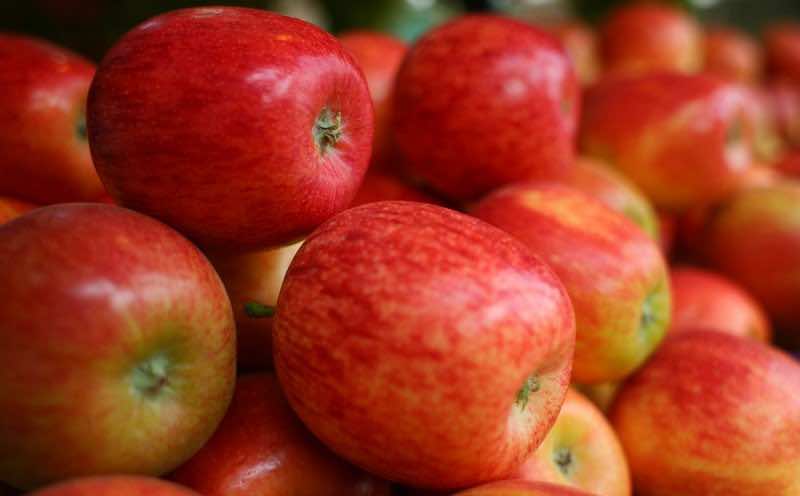
This produce is something that you can feel very confident about putting into your body. Short of actually growing it in your backyard yourself, there isn’t much more you can do to get healthy produce.
Organic produce will be pure, will not contain the pesticides and other chemicals that may be used on non-organic produce, and is also a lot healthier for the environment as well.
If you are interested in being as green as possible, going organic is the best route to go.
Now, organic produce does come at a cost, unfortunately. You will pay more – sometimes quite the hefty price tag for choosing organic. This is one of the biggest reasons that people shy away from it.
But, if you really care about your health maximally, it’s a price you should bare. Also keep in mind that while the initial cost of going organic may be higher, the costs to your health over the long run may overcome this initial high cost, thus making organic the cheaper alternative. If you have to foot high health care bills in the future because you’ve fallen ill due to all the chemicals that you’ve consumed with your produce, it’s clear to see that going organic was no longer the pricey option. And this doesn’t even take into account that now you aren’t feeling as healthy as you should be.
Now, if you simply cannot – your financial situation will not allow you to consume all fresh, organic produce at this moment, then at the very least, know your biggest enemies.
The ‘dirty dozen’ is a list of the worst produce offerings in terms of the amount of pesticides they have been exposed to.
If nothing else, avoid these at all costs.
The dirty dozen include: (listed in the order of highest to lowest levels of contamination)
- Apples
- Celery
- Sweet bell peppers
- Peaches
- Strawberries
- Nectarines
- Grapes
- Spinach
- Lettuce
- Cucumbers
- Blueberries
- Potatoes
If you can only spend a few dollars on organic produce, opt for these varieties. This will drastically reduce your intake of all the unwanted pesticides and chemicals.
In addition to the dirty dozen, a ‘clean fifteen’ list has also been created. This is a listing of the produce offerings that tend to be the healthiest choices, even if purchased in a non-organic fashion.
As you’ll soon see, most of these have an outer shell or skin that prevents you from taking in the unwanted pesticides that you are. When you peel off that outer shell, you are left with healthy fleshy fruits and vegetables underneath – untouched by the chemicals.
This list includes (in order of least contamination risk to most):
- Onions
- Sweet corn
- Pineapple
- Avocado
- Cabbage
- Sweet Peas
- Asparagus
- Mangoes
- Eggplant
- Kiwi
- Cantaloupe
- Sweet potatoes
- Grapefruit
- Watermelon
- Mushrooms
If you need to purchase these as non-organic varieties, you can do so without feeling too terribly bad about it.
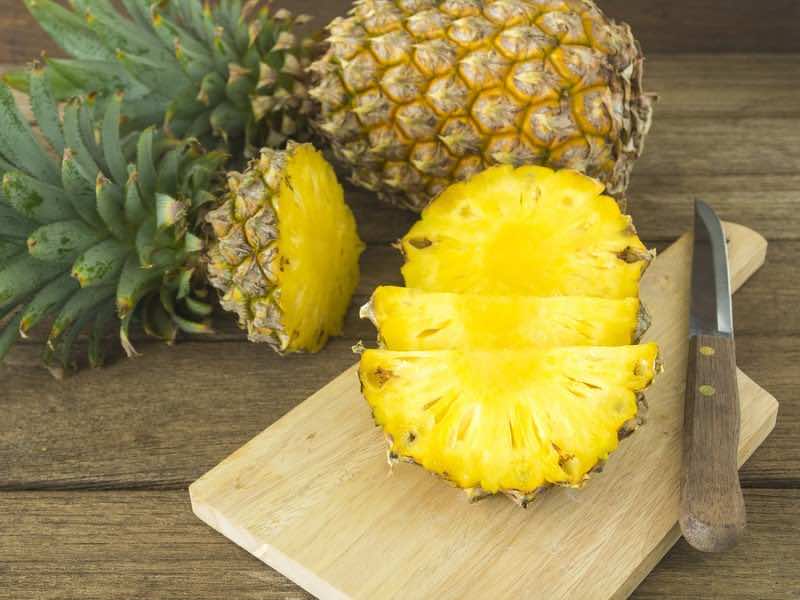
Do keep in mind however that using the trick I’ll talk about below will help to reduce any harmful effects even further.
Now, in some cases, produce isn’t always labeled to be organic in the supermarket. So how do you know if you are getting pesticides or not?
The trick is looking at the tags on the fruits and vegetables. Usually there is a little sticker that is used to identify it and this can tell you whether it’s organic or not.
Looking at the number on the sticker, you’ll see the PLU code (price look up), which is a four or five digit number. If the first digit in that number is a 9, you know that you’re holding an organically grown item.
If it isn’t, you may want to consider putting that item back unless it’s on the list of the clean fifteen.
Take the time to shop for and consider organic produce. If your budget can fit it, it’s well worth the cost.
Non-Organic Produce
The second type of produce you’ll find is the non-organic varieties. We’ve just covered a bit of important detail on this type of produce, so you should know which varieties of non-organic produce you’ll really want to avoid if possible (the dirty dozen).
What are the effects of choosing non-organic?
There are a number of negative health consequences you may set yourself up for if you are going the non-organic route.
These include:
• Increased risk of body fat gain
While you may think that the fruit and vegetable you’re eating is helping promote weight loss, this isn’t always the case. In fact, many of the chemicals that are being utilized in growing fresh produce are going to disrupt the natural hormonal balance in the body.
As your hormones are key factors that regulate the fat burning process, this can lead to unwanted weight gain over time.
Certain pesticides have been linked to an increased risk factor for obesity, cancer, as well as type two diabetes.
If staying lean is a goal for you, you’ll want to keep your pesticide intake in check.
Just For You: Download the 12 Week To Doubling Your Energy course for FREE and discover the most powerful exercise that can help accelerate the fat burning process
• Increased Risk For Nutrient Deficiencies
Another thing that most people do not realize is that certain pesticides may be putting you at risk for nutritional deficiencies.
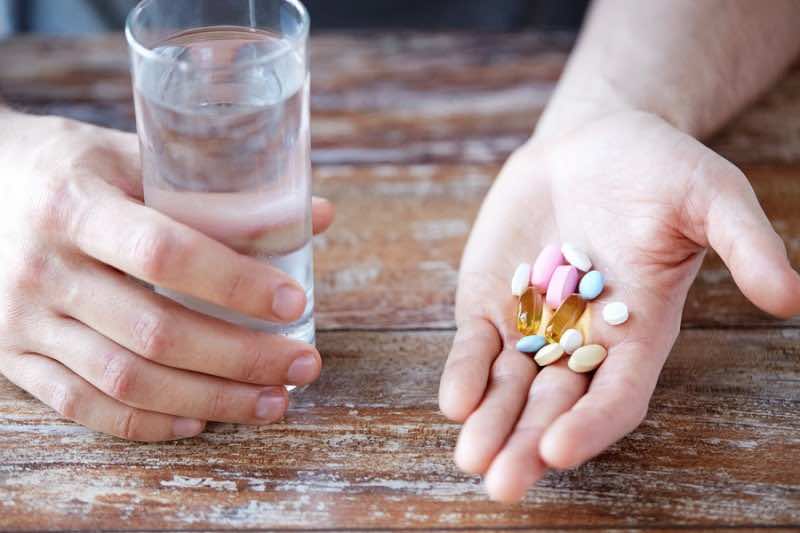
For instance, there are certain chemicals that are used in produce that may interfere with your ability to metabolize vitamin D, so despite the fact you may be supplementing with this vitamin, you may still not be reaping the full benefits of doing so.
- Increased risk of premature aging
Chances are you want to stay looking as young as possible for as long as possible. Sadly, this may not be the case if you are constantly consuming non-organic foods.
The chemicals and pesticides used to grow non-organic items can lead to premature aging due to the accelerating of oxidation in the body.
Many of these pesticides also lower the number of healthy bacteria in your gut, which will then impact your immune system and this too could have a devastating effect on the process of aging.
- Increased cancer risk
Finally, if you are consuming a diet rich in non-organic produce all the time and are taking in these pesticides, this may just increase your risk factor for cancer down the road.
Studies indicate that those who are chronically consuming non-organic produce can show increased risk factor and incidence rates of cancer, even if the disease does not run in their families.
So hopefully you can see the truth about going the non-organic route. If you want to sustain optimal health in the long run, that investment to organic produce is really worth it.
GMO’s
Finally, we have the last variation of produce that you may find in your local supermarket, which is GMO’s, or genetically modified foods.
Ever see a tomato so large you had to take a second look? Or maybe you say strawberries so brightly colored they looked almost fake. Genetically modified foods are becoming more and more common on supermarket shelves these days and you really need to take protection against them.
GMO’s are a relatively new type of food as the first GMO was being sold just 20 short years ago. As such, the research is not plentiful enough to know the full effects these will have on the human body, however what initial studies are showing is not pleasant.

So what may happen if you start consuming GMO’s?
Some of the initial research suggests that:
- GMO’s may be linked to gluten disorders
Feel as though you may be sensitive to gluten? What you may not realize is that it could be the GMO’s that you are eating causing this sensitivity.
The fact is that GMO consumption may trigger gluten related conditions through a number of different mechanisms. They may increase intestinal permeability, cause an imbalanced gut bacteria environment, impair the process of digestion, cause damage to the intestinal wall, and they may trigger an allergic response and activate the immune system.
All of this coincides with the experience people may have after consuming gluten rich foods.
So before you go cutting out all the gluten in your diet, you may also want to consider whether you are consuming GMO’s.
- Increased risk for birth defects
Mothers who are consuming GMO’s may also be putting their unborn child in harm’s way. Studies suggest that GMO’s can be linked to birth defects in babies, so if you are pregnant, that’s an important reason as ever to be making sure that whatever you eat is organic only.
- Elevated risk factor for Autism, Parkinson’s, and Alzheimer’s
GMO’s really mess with your brain and nervous system, and as such, they can put you at risk for diseases related to these systems in the body.
Those who are consuming high amounts of GMO’s in their diet may experience an elevated risk factor for autism, Parkinson’s, as well as Alzheimer’s disease.
While eating the odd GMO food here and there isn’t likely to pose these kind of problems, if you are eating them on a regular basis, you can rest assured issues will be resulting.
Exclusive Bonus: Download the 12 Week To Doubling Your Energy course for FREE and learn the most powerful strategies you can use right now to improve your brain health and function
So as you can see, GMO’s are not something you want to be putting in your body.
One way to identify a GMO is to again, look at the sticker on the piece of produce. If it starts with an 8, that is a sign that it is likely a GMO.
Many of the produce that comes in bags will be identified as a non-GMO as well as companies and farmers are learning that this is one thing that customers are seriously looking at, so you can identify them that way as well.
The One Trick To Remove Your Risk
Finally, if you are really set on not eating organic produce for cost reasons, there is one thing that you can do that will help to eliminate the risk of choosing non-organic food.
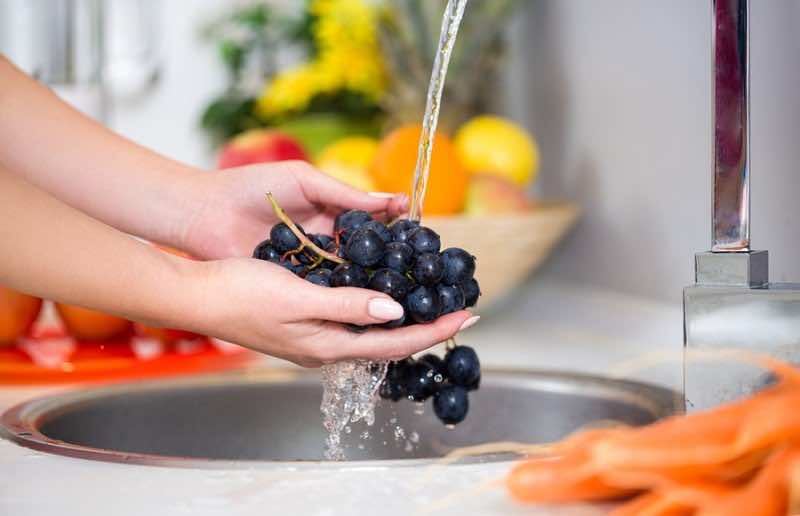
That thing? You’ll want to wash the produce that you purchase with 11.5 pH water that has been filtered by a Kangen water filtration system. This can help to remove the harmful effects of the pesticides, making sure that the produce you are putting in your body is healthier to consume.
You may want to consider even washing the organic produce you purchase with the 11.5 pH water as well as sometimes pesticide residue or other unwanted substances can get on these produce options as well.
So there you have the facts about how to use produce codes to identify GMO vs. organic. Learning how to buy groceries and the best way to wash vegetables is essential to optimizing your health and longevity.
What has been your experience with GMO’s? Have you noticed any changes to your health since switching over to organic produce? Share your experiences below.
Want to learn more on how you can boost your health and the steps you need to take to ensure your diet is as healthy as possible? Check out my 12 week course where I outline all the need-to-know details for you in an easy to follow format.
2 Comments
Leave a Comment
You must be logged in to post a comment.

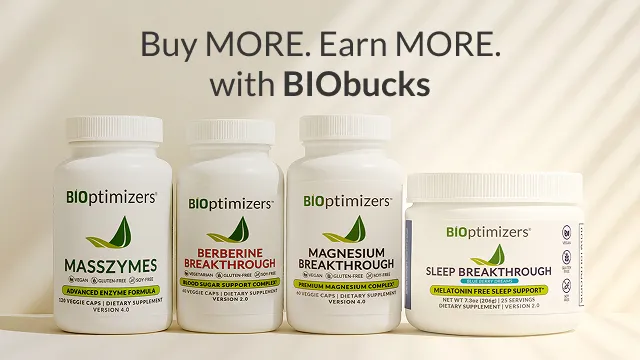
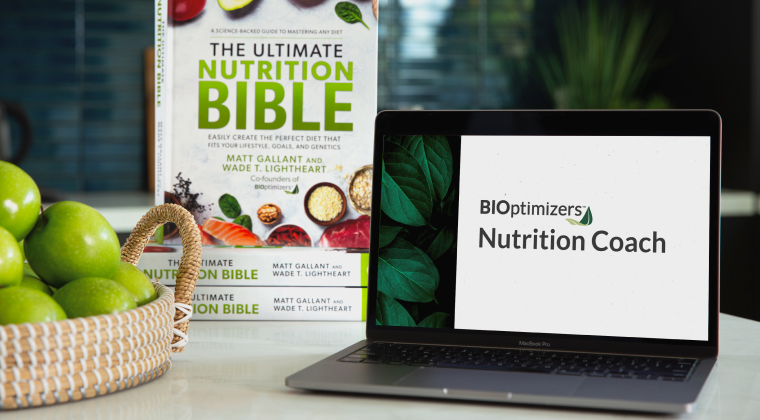



Hey thanks! Great presentation about what foods not to eat but, I’m sure anyone at your website already knows this. The alkaline water for washing food is probably the best method but some, (me) people can’t afford an alkaline water system. I’ve been using a distilled white vinegar dilution for most of my washable produce. Also, your products are the best on the market today, but like the water filter, unaffordable with my monthly budget. I’ve watched virtually all of your health videos, awesome information and well presented. Glad you’re here.
HI Daniel, Thank you for your observations. One of my pet peeves is the high expense of quality food and supplements. Especially considering the poor return of the tax money spent on “sick care”. It’s one of the reasons I teach entrepreneurship to many of my students.
For example the water machine can be paid for completely through tax savings. By starting a small business in the health industry people can offset some of their expenses relative to health.
Bottom line investing it all comes down to values and standards. I’ve invested more into my health than say my possession because I value my long term health over posessions which is a personal preference not a judgement. I have extremely wealthy friends who won’t spend money on supplements, health technolgogies but are great financial investors and entrepreneurs.
It all comes down to what you want and what your willing to do to get it. That being said I grew up in relatively poor (by North American Standards) family and I’m acutely aware of people’s financial challenges.
It’s one of the reason we provide so much financial education for free.
Thanks for the comments I love the feedback.